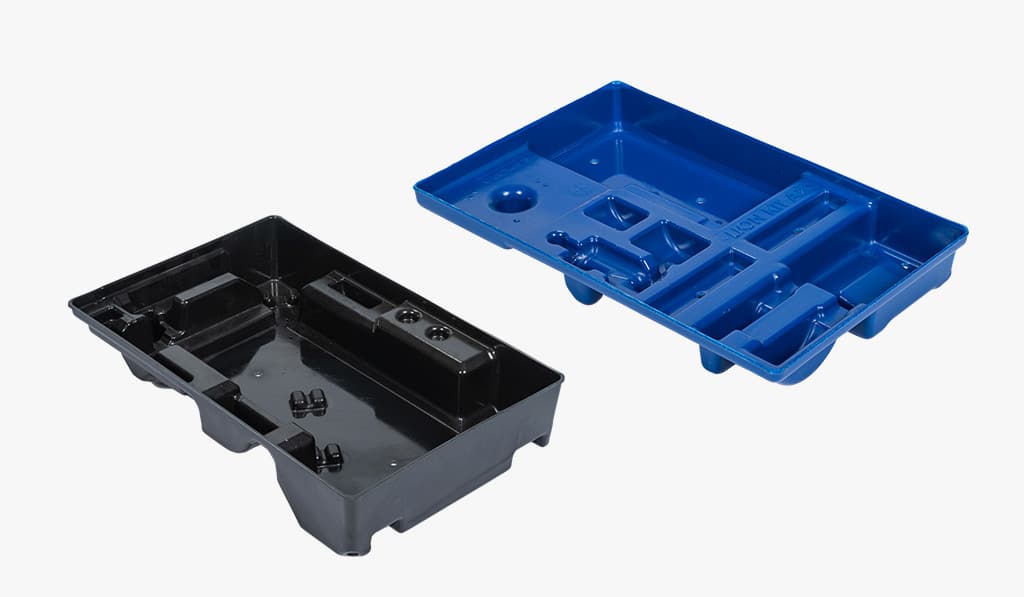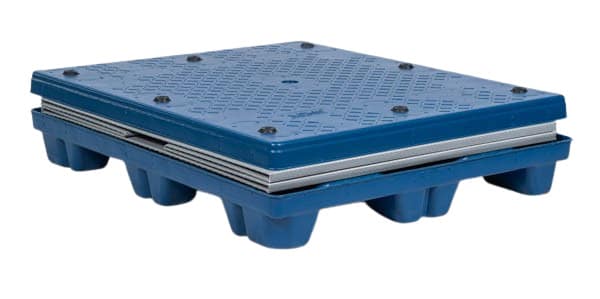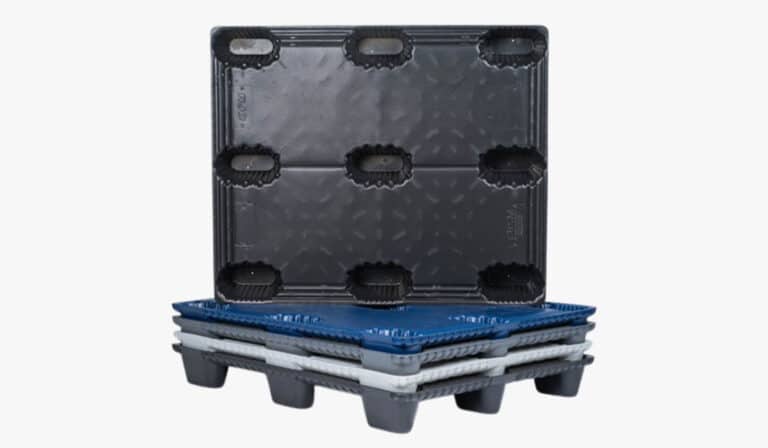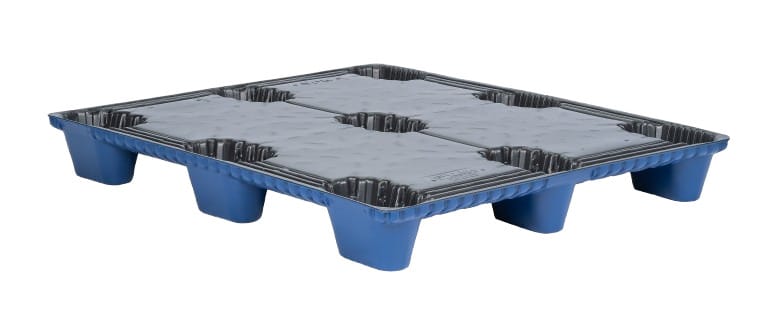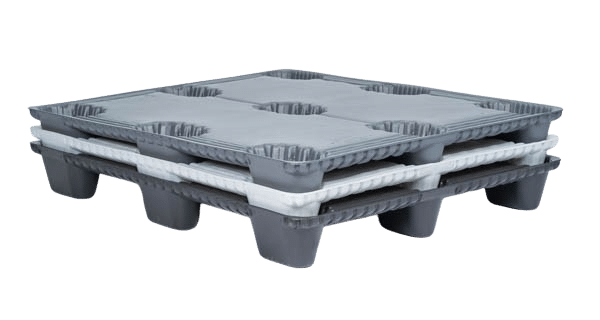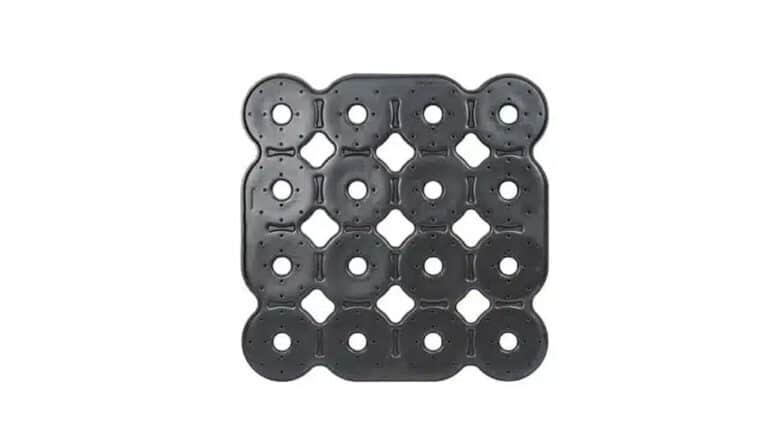Thermoforming: the ideal solution for molded plastics
Thermoforming stands out as an efficient and versatile technique for producing molded plastics and is widely used in various industries.
This process makes it possible to create plastic parts with complex shapes, meeting the design and functionality needs of different sectors, from packaging to automotive parts.
From now on we'll look at the thermoforming process, its advantages, applications and the types of plastics that can be used.
What is thermoforming? Understand the process
Thermoforming is a plastics processing technique in which a sheet of thermoplastic material is heated until it becomes malleable and then molded into a desired shape.
This process can be carried out using different methods, such as vacuum, pressure or mechanical tools.
The main characteristic of thermoforming is its ability to produce plastic parts with complex geometries, meeting the diverse needs of industry.
How thermoforming plastic works
The thermoforming process begins with the heating of a sheet of plastic, which is positioned in the thermoforming machine.
The temperature is adjusted so that the material becomes sufficiently malleable without losing its properties.
Once the ideal temperature has been reached, the sheet is formed into a mold using vacuum, pressure or mechanical force, depending on the type of process chosen.
Once the part has been molded, it is cooled rapidly to solidify the shape. This cooling can be controlled to ensure that the part retains its strength and desired shape.
Once cooled, the plastic part is removed from the mold and excess material can be removed, such as burrs, to finish the part.
Types of plastic used in thermoforming
Various types of plastic can be used in the thermoforming process, each with characteristics that meet different needs. The most common materials are:
- Polyethylene (PE): this plastic is widely used for its strength and durability, and is an excellent choice for thermoformed packaging for a variety of products.
- Polyvinyl chloride (PVC): very versatile, PVC is used in a wide range of applications, from packaging to components for the automotive industry.
- Polystyrene (PS): known for its rigidity and impact resistance, polystyrene is often used in food packaging and other disposable products.
- Polyethylene terephthalate (PET): popular in the packaging market, PET is resistant and transparent, making it ideal for manufacturing bottles and other types of thermoformed packaging.
- Acrylic (PMMA): used in applications that require high transparency, such as displays and components that need visual aesthetics.
The choice of material will depend on the desired application, such as resistance, flexibility or transparency.
Advantages of thermoforming for industry
Thermoforming offers a number of advantages to the industry, making it a popular choice for the production of molded plastic.
Efficiency and cost reduction
One of the great advantages of thermoforming is its efficiency. The process is relatively simple and quick, which means that parts can be produced on a larger scale without compromising on quality.
Compared to other molding processes, such as injection molding, thermoforming has lower initial costs, which makes it attractive for producing large volumes of parts with simple designs or small quantities with varying models.
The possibility of using simpler and less expensive molds helps to reduce costs, especially in industries that need continuous production of thermoformed packaging or other plastic parts.
Flexible design and customization
Another important advantage of thermoforming is design flexibility. As the process allows you to work with malleable materials, you can create plastic parts with complex geometries, fine details and customized finishes.
This level of flexibility makes it possible to meet a variety of market needs, from thermoformed packaging to structural parts for the automotive sector and others.
It is also possible to customize production by adjusting moulds and processes, making thermoforming ideal for creating exclusive components or short runs, better meeting customer requirements.
Sustainability in the production of molded plastics
With the growing focus on sustainability, thermoforming stands out for being a relatively more sustainable process, as it generates less material waste compared to other production methods.
Many plastic materials used in thermoforming can be recycled, helping to reduce environmental impact.
The use of recyclable plastics, such as PET, and the possibility of reducing the use of disposable materials, such as plastic films, make thermoforming a more eco-friendly option for various applications, including packaging for food and other products.
Thermoforming applications in different sectors
The versatility of thermoforming allows it to be applied in a wide range of sectors. Below, we explore some of the main areas where thermoforming has been used successfully.
Thermoformed packaging for food, medicine and electronics
One of the biggest segments in thermoforming is packaging. In the food sector, for example, thermoformed packaging is used to store fresh or frozen food or ready-to-eat products.
Packaging helps maintain the integrity and safety of products, as well as offering an attractive look for the consumer.
Thermoformed packaging for medicines is also common, as it offers effective protection against contamination and damage during transportation and storage.
In the electronics sector, thermoforming is used to protect sensitive components during transportation and product assembly.
Plastic parts for the automotive and white goods sectors
Thermoforming has a wide application in the automotive industry, especially in the production of vehicle interior components such as dashboards and moldings.
The flexibility of the process makes it possible to create light and resistant parts that meet the high quality standards demanded by the automotive industry.
In the white goods sector, which includes products such as household appliances, thermoforming is used to produce the plastic parts that make up appliances, offering a combination of resistance and aesthetics.
Customized displays and components
The ability to customize plastic parts makes thermoforming ideal for producing displays and other marketing components.
The pieces can be molded into specific shapes, offering practical and visually appealing solutions for companies wishing to create displays and other promotional materials.
Thermoformed pallet
Thermoformed pallets are an excellent application of the technique, especially for companies looking for light, resistant and economical solutions for transporting and storing goods.
They are a more sustainable alternative to traditional wooden pallets, as they are more durable, easier to clean and can be recycled at the end of their useful life.
The production of thermoformed pallets helps reduce logistics costs and improves efficiency in the transportation of goods.
Conclusion
Thermoforming is proving to be an ideal solution for the production of molded plastics, offering efficiency, flexibility and a wide range of applications in various sectors.
From the production of packaging to the manufacture of automotive parts and pallets, thermoforming has proven to be an advantageous technique in both economic and environmental terms.
By enabling the creation of plastic parts with customized designs and complex geometries, it meets the needs of a constantly evolving market, which is looking for increasingly innovative and sustainable solutions.

